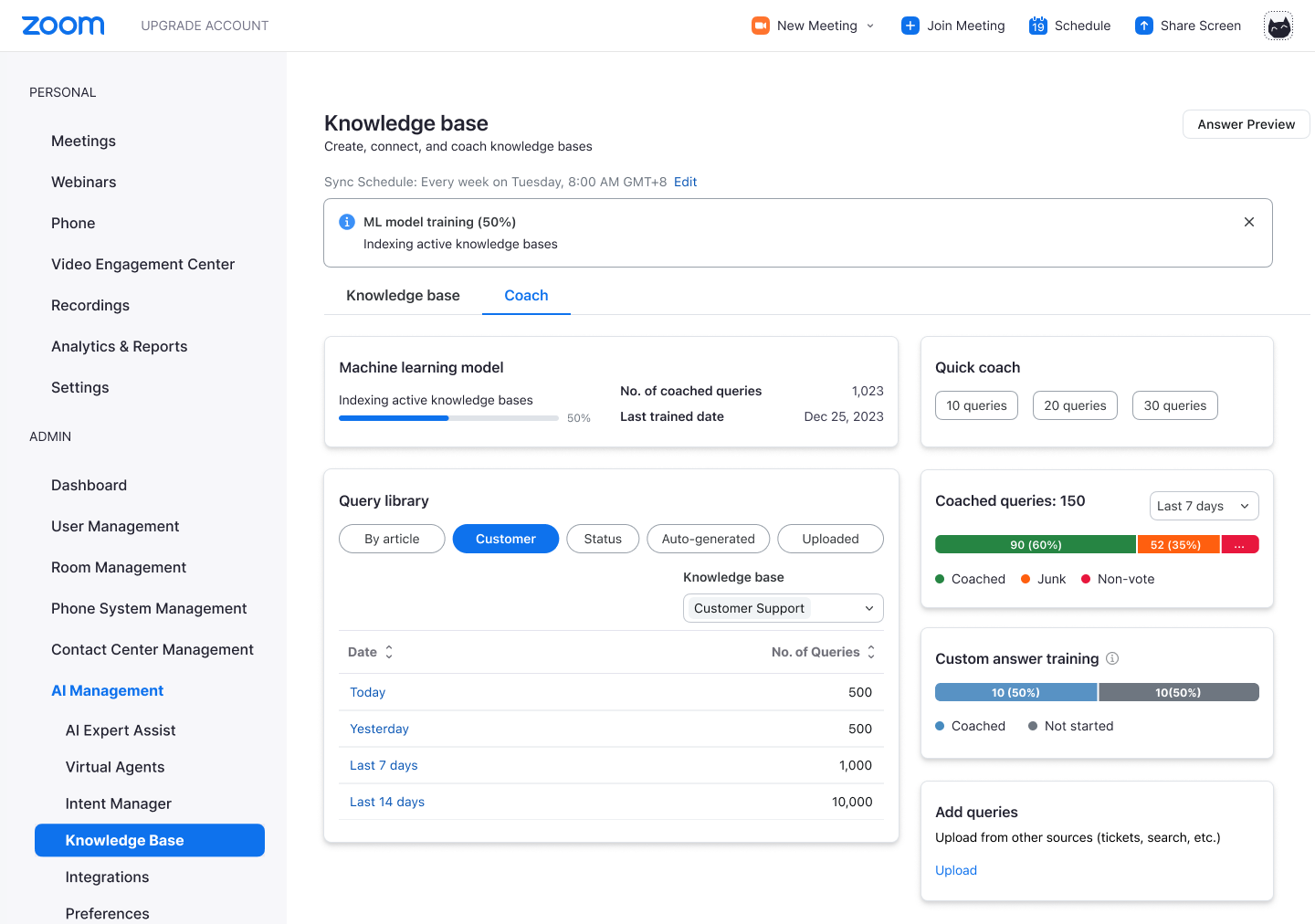Zoom Virtual Agent
Zero to One designer for Zoom's first AI chatbot
Zoom Virtual Agent (ZVA) is Zoom's first AI chatbot and self-service solution. After Zoom acquired Solvvy, I served as the lead designer for the knowledge base and intent manager features of ZVA from September 2022 to March 2024. Until May 2023, I was also the lead designer for the bot flows team. In that time, I established myself as a strong researcher, team builder, and AI/ML subject matter expert at Zoom.
ZVA has been on the market for almost a year now but has been a hit since the beginnning. One of our first clients saw an increase in self-service rate (60% to 70%) and sales leads ($0 to $250,000) in just six days. Zoom’s own customer support team calculated more than $20 million in cost savings each month.
I work closely with engineers and product managers to establish processes for both asynchronous and live work. I preach and practice the importance of design and engineering collaboration. As a result, I headed the most productive teams on the Zoom Customer Experience product that released a number of major features in 2023:
- The zero-to-one build of the knowledge base management system, the core of our AI chatbot
- The complete redesign of the ML intent management system
- ML model coaching tools for AI administrators for both knowledge base and intents
- One-click multi-language AI chatbots with independent versioning for each language

Knowledge base
The knowledge base is the source of training data and serves as the “source of truth” for all AI-powered products in the Zoom Customer Experience suite. It ingests data via web crawling, API, or self-creation and, along with customer and AI-generated queries, is the foundation for the training of a customer’s AI model.
From clean data ingestion to easy-to-use ML coaching tools, the knowledge base is the fine-tuning layer necessary to ensure your AI bots and agents respond in the appropriate brand voice and deliver accurate answers.

Intent Manager
Intents are the foundation of highly customizable supervised AI models that allow businesses to create specific processes to solve more nuanced customer problems. ChatGPT changed people's expectations of their interactions with AI, but intent models are practically required fine-tuning layers for any business that wants to decrease the hallunication of their AI bots and agents.
Generative AI can even be used to kickstart these models by providing sample intents and training phrases that can be then further customized as needed by the brand.
Bot Flows
While AI models trained on knowledge bases can provide general answers, often customer resolutions require nuance or specificity that cannot risk misunderstanding or hallucinations. Bot flows can be used by businesses to create simple and complex steps for their customers to self-service their issues. One of the main problems our customers face is creating and maintaining flows in multiple languages with limited professional localization support.
I led the research, design, and build of our major differentiating feature: automatic machine translation and independent versioning for professional localization. It was one of the key asks from businesses and a major gap in the chatbot market. Most chatbot makers have automatic machine translation capabilities, but they cannot maintain a localized translation without creating a separate flow or bot. The biggest problem we wanted to solve: every time the bot required any editing, the machine translation would overwrite the localized translation.
After working with multiple customers and internal stakeholders, Zoom Virtual Agent can be automatically translated into 17 languages and, more importantly, each language can be managed independently. Changes made to the primary (or key) language automatically translates new steps without overwriting independently translated ones.
This feature is helping close deals as it becomes table stakes for AI bots to be able to operate out of the box in multiple languages as well as accomodate for professional localization.
